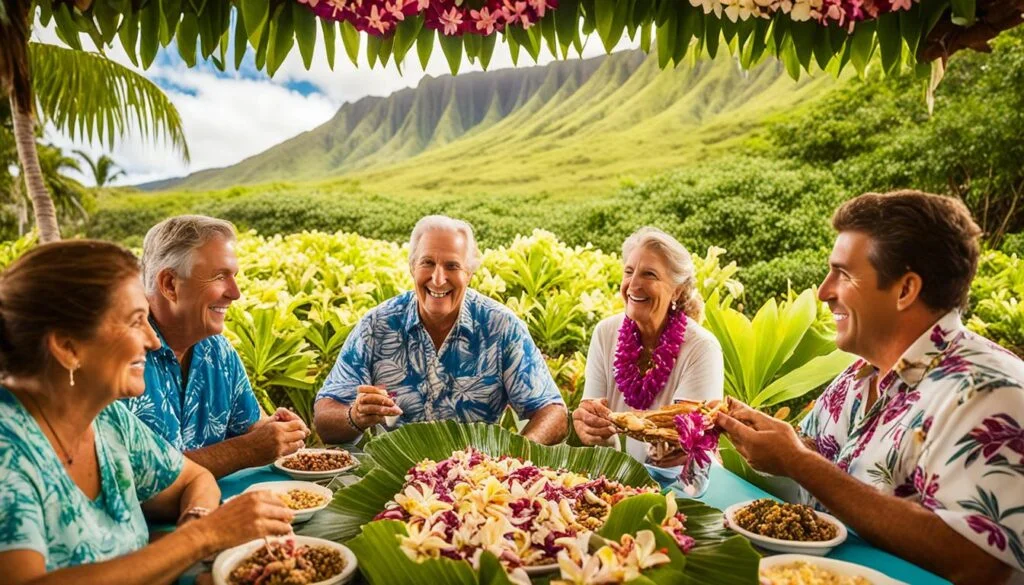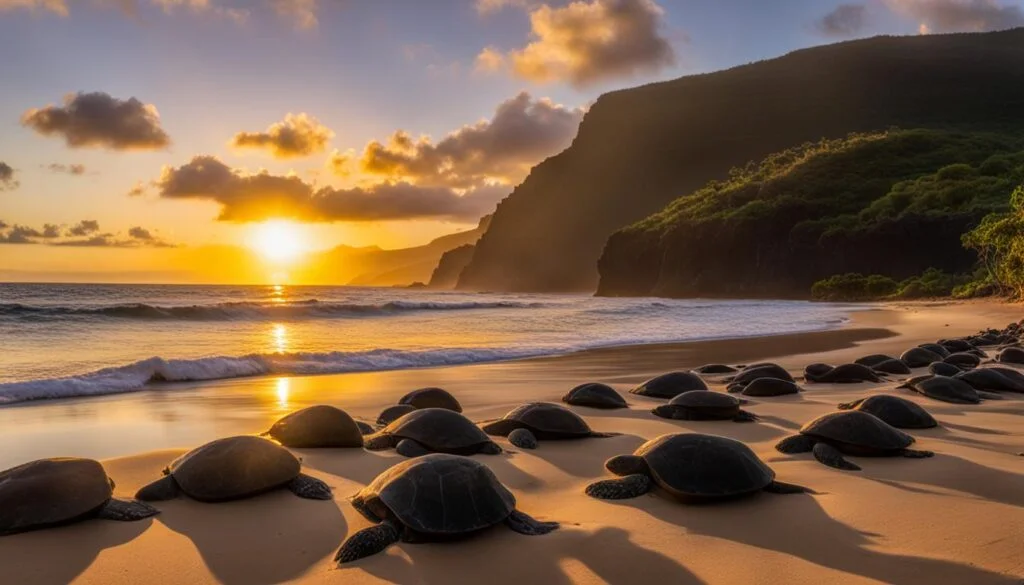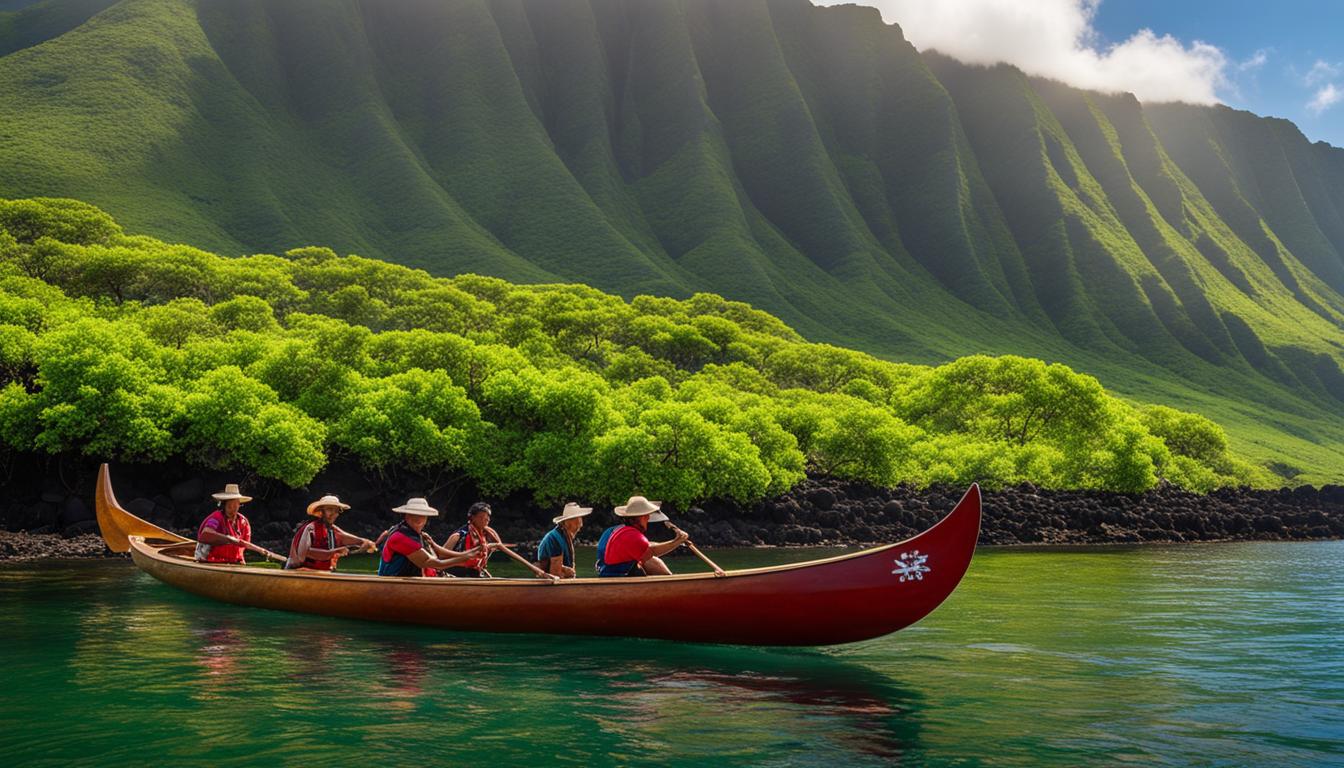Unveiling Molokai’s Cultural Tapestry: Navigating Etiquette and Traditions 🌺
In the heart of the Pacific, there lies an island where the winds whisper tales of tradition, and the waves echo with the voices of ancestors. This is Molokai, an enclave where cultural etiquette Molokai isn’t just a mere set of guidelines, but the very fabric that binds its community together. It is a place where adherence to manners in Molokai can transform your visit into a truly authentic Hawaiian experience.
Here, every interaction is a chance to connect with a rich legacy embroidered with respect and the spirit of Aloha. Molokai is not just an island; it’s a living museum—showcasing the best of traditional customs Molokai and Hawaii cultural norms. But why is it vital for travelers to understand and respect this cultural tapestry? And how can such understanding reshape their journey?
From the revered Ho’okahi Pu’uwai paddlers to the teachings of the Aloha Committee, Molokai exemplifies a community where traditions are not relics of the past but are lived with every breath and wave. Whether you’re a seasoned traveler or a curious soul seeking genuine connection with Hawaiian culture, knowing the unwritten rules of island engagement could be the key to unlocking an enriching island experience steeped in authenticity.
As you ready your senses to embrace the soul of Molokai, reflect upon this: Cultural etiquette extends beyond just being polite; it’s a pathway to the heart of a civilization. Be prepared to discover how learning and following local customs can lead to deeper relationships and a profound respect that reverberates far beyond your stay.
Understanding the Roots of Molokai’s Culture
To fully grasp the deep-seated traditions of Molokai, one must delve into its historical practices and the unspoken codes of conduct that have been passed down through generations. It is a culture that is inextricably linked to its past, a treasure chest of indigenous practices that are still very much alive and respected today.
The History and Significance of Outrigger Canoeing
Outrigger canoeing is a pillar of Molokai’s cultural heritage. For the island’s people, these vessels are more than mere modes of transport; they are embodiments of their ancestors’ ingenuity and their connection to the sea. The designs speak volumes about the indigenous practices of Molokai and the Polynesians’ skilled navigation, whose outrigger canoes were vital for discovery and settlements across the expansive Pacific Ocean. This love and reverence for the sport foster a community bound together by waves and history, nourishing a culture of respectful behavior that resonates with every stroke of the paddle.
Ho‘okahi Pu’uwai: The Heartbeat of Molokai’s Paddling Tradition
Ho’okahi Pu’uwai – One Heart – represents the essence of Molokai’s paddling tradition. Through synchronized strokes, paddlers achieve more than physical coordination; they attune their spirits to the rhythm of their ancestors, where the canoe is not simply an object but a sacred vessel, honored with cultural sensitivity. This unity is palpable in the air and water, a testament to the island’s indigenous practices and the collective heartbeat that pumps through Molokai’s rich cultural life.
The Aloha Spirit Law and Its Ongoing Influence
In Hawaii’s legislative texts lies a unique law that encapsulates the essence of Molokai’s approach to life: the Aloha Spirit Law. This set of principles calls for kindness, unity, agreement, humility, and patience to guide the hearts and minds of all who step foot on the island. For both residents and visitors, the Aloha Spirit Law is a daily reminder to practice cultural sensitivity and respectful behavior, infusing Molokai’s multi-faceted culture with warmth and hospitality.
In Molokai, we are not just keeping traditions; we live them. Through our respect for the canoes, our continuation of the paddling legacy, and our embodiment of the Aloha Spirit, we honor our past and weave the future of our island’s rich heritage.
Foundational Elements of Hawaiian Cultural Etiquette

Embracing the local traditions Molokai offers, ensures a resonant experience with the island’s community, steeped in a rich tapestry of cultural etiquette Molokai is known for. From the moment you step into this serene Hawaiian landscape, observing Hawaii cultural norms and practicing manners in Molokai is more than just a formality—it is the essence of the island’s spirit of hospitality and mutual respect.
- Gift-Giving: A cherished practice involves bringing a gift, often food or a thoughtful item, when visiting a local home. This expresses gratitude and respect to your host, exemplifying one of Molokai’s core values of kindness.
- Attire: Visitors are encouraged to dress in a way that is aligned with local attire, which is similar to Western clothing standards. Assumptions about stereotypical island wear may lead to unintentional disrespect.
- Language: While the pidgin language is prevalent—a unique creole blend of Hawaiian, Japanese, Filipino, and English—it’s crucial to recognize that residents are also fluent in standard English. Acknowledging this ensures clear and respectful communication.
Each of these elements not only showcases the island’s welcoming nature but also serves as a bridge to greater understanding and harmonious interaction. Engage with these foundational cultural practices, and you become part of Molokai’s living heritage, contributing to preserving its distinct sense of place within Hawaii.
Cultural Etiquette Molokai: Navigating Social Interactions with Respect

To fully immerse in the authentic Molokai experience, visitors are encouraged to embody respectful behavior authentic to Molokai, showcasing a profound understanding of the island’s cultural sensitivity. Interweaving traditional manners in Molokai with the daily practices of community life enriches the traveler’s journey and fosters a genuine connection with the locals.
Gift-Giving Practices: Showing Gratitude the Molokai Way
When it comes to social gatherings in Molokai, adhering to the island’s gift-giving custom symbolizes respect and thankfulness. This small token, usually in the form of a food gift, is a tangible expression of respectful behavior in Molokai and is well-regarded among hosts as a sign of appreciation.
Shoes Off: Understanding Household Customs
In line with the island’s cultural sensitivity in Molokai, the act of removing one’s shoes before entering someone’s abode signifies honor and respect towards the homeowner’s space. It’s a simple gesture that’s deeply rooted in the tradition of cleanliness and manners in Molokai.
Language and Communication: Pidgin and Politeness
Engaging with the Molokai community calls for an acknowledgment and respect for their linguistic heritage, which includes pidgin English alongside standard English. The utilization of local phrases such as “aloha” for greetings and “mahalo” to express gratitude is encouraged, harmonizing with the island’s indigenous practices in Molokai and detaching from any preconceived notions about the local dialect.
Expressions of Welcome in Molokai: The Lei Tradition

In the heart of the Pacific, Molokai holds fast to traditional customs that color its identity, and among these, the lei stands as a poignant symbol of hospitality and affection. This local tradition is not just a decorative ornament but a meaningful representation of the island’s cultural etiquette. To be adorned with a lei upon arrival is to be greeted not just with a garland but with a visible manifestation of the spirit of Aloha.
The lei is steeped in the history of the Hawaiian archipelago; each bloom woven into the garland carries the essence of the islands’ lush flora. It is a common understanding in Molokai that when one receives a lei, it must be worn with gratitude and respect. To remove or refuse it in the presence of the one who offered it might be seen as a rejection of the welcoming gesture — a faux pas in the dance of cultural exchange.
“The lei is more than flowers strung together; it is the embrace of a culture, welcoming you to partake in its beauty and traditions.”
- Leis are traditionally given during greetings, farewells, celebrations, and significant life events.
- It is a sign of respect to leave the lei on as long as you are in the presence of the person who gave it to you.
- Special leis are reserved for special occasions, such as an open-ended lei for expectant mothers, symbolizing safety and continuity.
In essence, the practice of giving and receiving leis in Molokai is a treasured ritual. It exemplifies the island’s deep-rooted cultural etiquette and honors the connection between guest and host. Embracing the lei is a significant way to show respect and appreciation for Molokai’s traditional customs and local traditions. A timeless part of Molokai’s heritage, the lei will continue to be a central element of welcome for years to come.
Exploring Molokai’s Natural Splendor with Sensitivity

Amid the serenity of Molokai’s natural beauty lie traditions and customs that maintain the island’s integrity and spirit. It’s a place where cultural sensitivity Molokai is more than a practice; it’s a cornerstone of visitor interaction with the environment. These customs serve as a reminder of the importance of respectful behavior Molokai, particularly as tourists admire the island’s magnificent flora and fauna.
Wildlife Encounters: Observing with Care
Encounters with Molokai’s wildlife are moments of wonder that demand caution and reverence. Observing creatures such as turtles gliding beneath the waves or sharks commanding the deep blue should be conducted with a gentle gaze, minimal noise, and a respect that ensures no interference. The experience is a balancing act of admiration from a distance, in line with the spirit of traditional customs Molokai.
Malama ka ‘aina: Respecting Sacred Lands and Kapu Restrictions
The axiom ‘Malama ka ‘aina,’ which calls for the care of the land and sea, reflects the local ethos of conservation and respect deeply rooted in Hawaiian culture. Visitors are implored to cherish this precept by leaving each place as they found it, maintaining the island’s mana untouched. Furthermore, wahi pana, or sacred sites, are protected not only by tradition but also by kapu, ancient Hawaiian codes of conduct. Compliance with these restrictions is not a mere formality but rather an act of homage to Molokai’s storied past and its enduring legacy.
Conclusion
Embarking on a journey to Molokai presents an opportunity to not only witness the island’s breathtaking scenery but also to immerse oneself deeply in a culture that pulsates with history and respect. Understanding and practicing cultural etiquette Molokai is more than adhering to a set of rules; it is about embracing a way of life that cherishes harmony, tradition, and the Aloha spirit. Visitors who display manners in Molokai that reflect genuine respect and sensitivity will find their experience on the island to be profoundly enriching.
Engaging with the community through indigenous practices Molokai affirms one’s dedication to valuing the heritage and customs that have been lovingly preserved by its people. Every element, from the simple exchange of a lei to the conscious effort to avoid disturbing the island’s ecosystems, plays a critical role in safeguarding the cultural fabric of this unique Hawaiian paradise. The principle of cultural sensitivity Molokai is a golden thread that ties visitors to the heart of the island, urging them to honor local customs and contribute to the perpetuation of Molokai’s vibrant culture.
As the curtain closes on our exploration of Molokai’s cultural landscape, it is clear that the true beauty of the island lies not just in its natural wonders but also in the ethos of its people. Visitors who take the time to understand and participate in Molokai’s cultural practices with respect and earnestness are likely to leave the island with a much richer experience and a greater appreciation for the importance of cultural preservation in our global village. By honoring these traditions, we ensure that the legacy of Molokai’s culture continues to thrive for generations to come.







